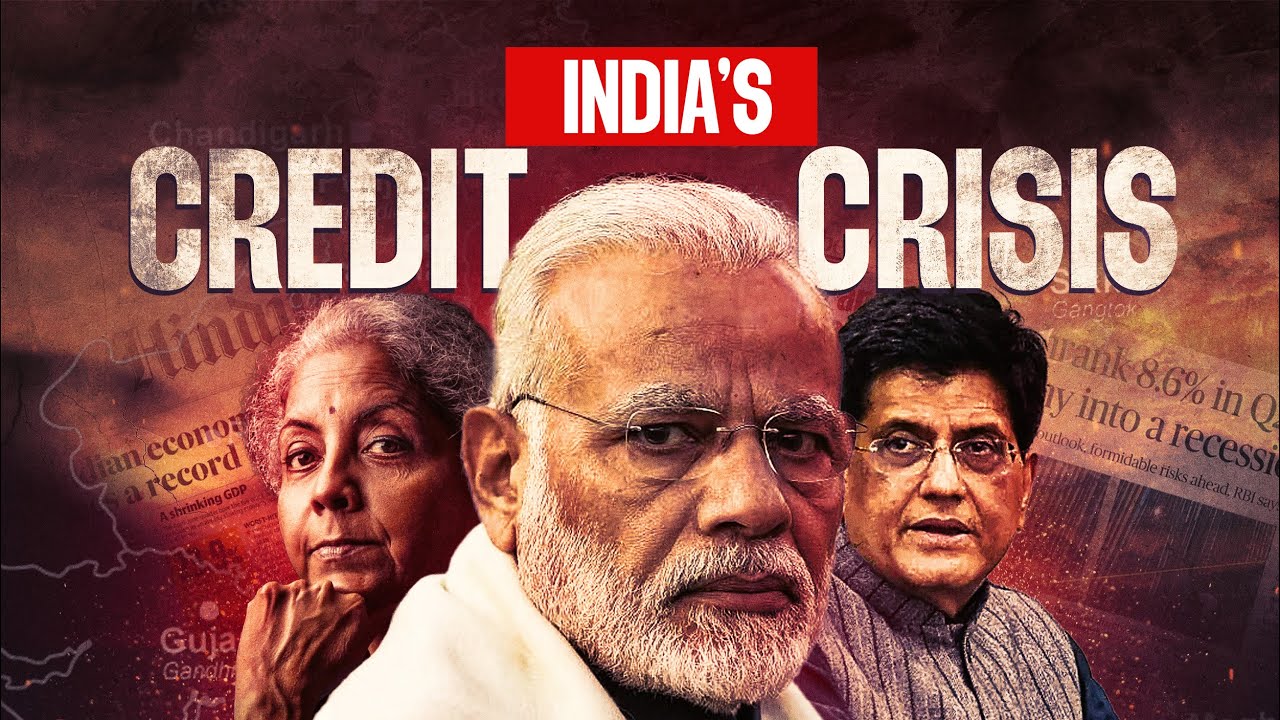Analysing India's SLOW GDP (& its impact) | Akshat Shrivastava
Summary
TLDRThe video discusses the challenges India faces in terms of GDP growth, foreign investments, and inflation, suggesting that the country’s economic growth is slowing down compared to global markets like the US. The speaker emphasizes the need for investors to diversify their portfolios and hedge against inflation, urging viewers to reconsider the impacts of a depreciating INR and rising costs on their investments. A call to action is included for viewers to explore learning resources on fundamental analysis and macroeconomic trends to safeguard their wealth.
Takeaways
- 😀 India's nominal GDP growth is strong, but the real GDP growth over the last decade has been slower than expected, averaging 5-6%.
- 😀 Inflation is a significant concern in India, particularly in metropolitan areas, eroding purchasing power and investment returns.
- 😀 The Indian Rupee (INR) has depreciated, making India an attractive destination for foreign investments, but FDI and FII are still showing caution.
- 😀 The Indian economy faces challenges from a slowdown in private consumption and high inflation, especially in the context of global economic uncertainty.
- 😀 Despite these challenges, the Indian stock market remains resilient, with continued growth in mutual fund SIP (Systematic Investment Plan) inflows.
- 😀 The current taxation system in India is critiqued, with a call for tax rationalization and expanding the tax net to fund government spending and investments.
- 😀 The speaker emphasizes the importance of investing in global markets, particularly in sectors like AI, semiconductors, and robotics, to hedge against domestic risks.
- 😀 The Indian government must create competitive advantages in emerging sectors to boost economic growth and attract foreign investments.
- 😀 Structural changes, such as simplification of labor laws and reduced regulatory hurdles, are needed to make India a more attractive investment destination.
- 😀 Investors should focus on portfolio diversification, including international stocks, to mitigate risks from India's inflation and economic stagnation.
Q & A
What is the current state of India's GDP growth over the past 10 years?
-India's GDP growth has been relatively slow, averaging around 5% to 6% annually, which is considered low for an emerging economy.
Why is India struggling to attract foreign investments?
-India's challenges include complicated labor laws, limited high-growth sectors like AI and semiconductors, and a narrow tax base, all of which deter foreign investments.
What role does the Foreign Direct Investment (FDI) play in India's economy, and how has it been performing?
-FDI plays a crucial role in stimulating long-term growth. However, FDI inflows into India have been decreasing due to India's underdeveloped high-growth sectors and unfavorable business regulations.
How has the depreciation of the Indian Rupee (INR) affected investor confidence in India?
-While the INR has weakened, it hasn't resulted in significant increases in foreign investments, indicating that investor confidence in India’s economic potential is currently low.
What are the implications of high inflation for India’s urban population?
-High inflation, particularly in urban areas, erodes purchasing power and reduces the real returns on investments, making it critical for individuals to protect their wealth.
How can investors protect their wealth against inflation in India?
-Investors can hedge their wealth by diversifying their portfolios, including holding positions in international stocks or assets, and considering alternative investments like commodities or foreign markets.
What sectors are viewed as high-growth opportunities for international investors?
-International investors are primarily interested in sectors like artificial intelligence (AI) and semiconductors, which India is currently underdeveloped in.
What is the importance of portfolio diversification in the current economic climate in India?
-Given the slow GDP growth and high inflation, portfolio diversification is critical for mitigating risks and ensuring that investments perform well in both domestic and international markets.
What advice does the speaker offer for long-term investors in India?
-The speaker advises long-term investors to be cautious, as the Indian market may not offer substantial returns after accounting for inflation. Diversifying investments and seeking international growth opportunities are recommended.
What is the impact of India's narrow tax base on its economy?
-India's narrow tax base limits government revenue and hinders the development of the domestic economy, contributing to slower economic growth and challenges in financing public services.
Outlines

This section is available to paid users only. Please upgrade to access this part.
Upgrade NowMindmap

This section is available to paid users only. Please upgrade to access this part.
Upgrade NowKeywords

This section is available to paid users only. Please upgrade to access this part.
Upgrade NowHighlights

This section is available to paid users only. Please upgrade to access this part.
Upgrade NowTranscripts

This section is available to paid users only. Please upgrade to access this part.
Upgrade NowBrowse More Related Video

US Tariffs Destroy India's iPhone Industry? | Modi Trapped! IMF talks with Pakistan | Good News Came

Why India has a POOR CREDIT RATING Despite being the fastest growing ECONOMY? : Detailed CaseStudy

Recession Is Coming... And This Time It’s Going to Be UGLY

Why being long China is DUMB

What is Economic Growth? | Ask an Economist

Nur Annisa Pratiwi (2019610159) Sejarah Perekonomian Indonesia Pada Masa Kepemimpinan SBY
5.0 / 5 (0 votes)